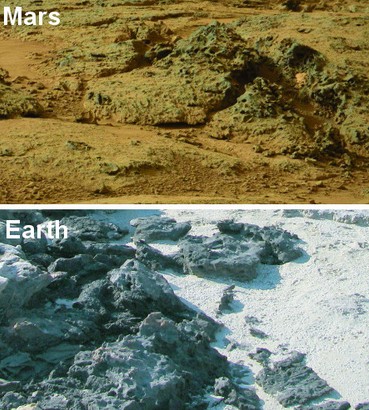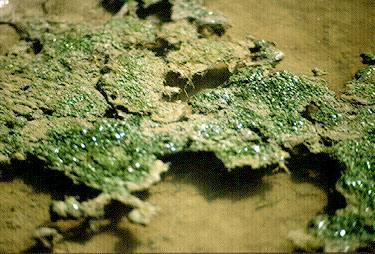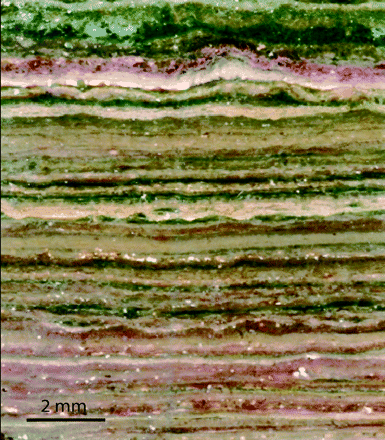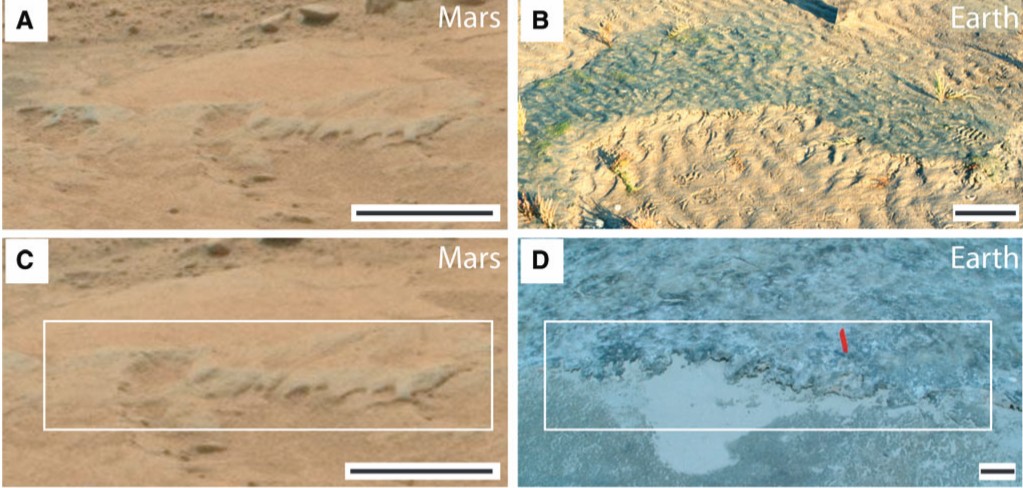January 9, 2015 – The recent detection of methane spikes on Mars reported here in a posting on December 17th, is part of mounting evidence for the existence of life on the Red Planet. But there is far more being uncovered by the Martian rover, Curiosity, that indicates the past presence of biological structures in Martian images being beamed back to Earth.
The question you may ask is how can we be so sure that what we see in the rocks is biological in origin? We have Earth examples which compare favorably with structures in Martian rocks and the Earth examples are biological in origin.
But just as in nature here on Earth things that look alike may have entirely different origins. Look at a dolphin and a shark. One is a warm-blooded mammal, the other a cartilaginous fish. But their evolutionary paths are as dissimilar as you can imagine.
And, of course, to make any claim of biology on Mars less convincing, we have “kooks” who upon examining Curiosity images proclaim they see rabbits and lizards on the Martian surface. Professor Nora Noffke, in the Department of Ocean, Earth and Atmospheric Sciences at Old Dominion University, Norfolk, Virginia, is not one of those “kooks.” Noffke has been examining Martian images and compared them to geology here on Earth that is of biological origin. Her paper appears in Astrobiology Magazine, and her conclusion is these are “microbially induced sedimentary-like structures…found to be arranged in spatial associations and temporal succession that indicate they changed over time.” She goes on to point out that this is common to Earth-observed microbial mats in the fossil record.
The structures here on Earth are called microbial mats (see picture above). We see evidence of them in the fossil record on our planet and we find them in lots of locations on Earth today.They start off as very thin biofilms and then grow to multi-layered sheets of bacteria, fungi and archaea (extremophiles), forming centimeter (0.39 inches) thick layers.
In Earth’s early history microbial mats oxygenated our atmosphere and were the predominant life that flourished on the planet. If Noffke’s interpretation of Martian images is correct these organic structures may have been life on Mars during its much wetter past.
So what does Noffke’s evidence look like? The images below juxtapose what Noffke believes is microbial mat evidence from Curiosity images next to similar images taken in Australia. The Martian images other than wind erosion bear similarities with those from Earth.
In the next two images from her paper published on December 18th we see a Mars erosion feature strikingly similar to eroded fossil microbial mats at Carbia Point, Western Australia.
Noffke suggests that the equipment on board Curiosity could prove her hypothesis. Using the Sample Analysis at Mars (SAM) instrument package scientists should be able to conduct tests for chemical and organic signatures when encountering similar rock formations as Curiosity climbs the slopes of Mount Sharp.
Noffke is focused on the paleo-environment of the Red Planet and not evidence of present life. But Curiosity has recently reported methane spikes in the atmosphere of Gale Crater. The presence of methane in the atmosphere may be an echo and byproduct of present life. Microbial out-gassing would be consistent with the presence of archea, particularly methane. And if life were still present on Mars it somewhat makes sense that it would take the form of archea since these microorganisms, classified as extremophiles, are typically found to predominate in environments where little else can thrive.
It wasn’t that many centuries ago that we humans saw Earth as the centre of the Universe and the sole place where life exists. Curiosity and the still thriving Opportunity rover are changing this. Through their eyes we see that life is not exclusive to Earth And although both rovers were not tasked with finding life they continue to uncover Martian history that very much points in the direction of past life. Their presence on Mars is paving the way for future generations of robotic and even human explorers to make that ultimate discovery, altering our view of ourselves, our planet and the Universe forever.






















